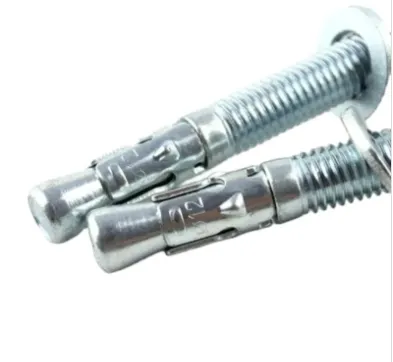nov. . 21, 2024 19:29 Back to list
threaded rod bolt
Understanding Threaded Rod Bolts Design, Applications, and Benefits
Introduction
Threaded rod bolts are essential components in various construction, engineering, and manufacturing applications. Their unique design allows for secure fastening of materials and provides versatility in multiple contexts. In this article, we will explore the structure, benefits, applications, and best practices associated with threaded rod bolts.
What is a Threaded Rod Bolt?
A threaded rod bolt is a long, cylindrical rod with continuous threads running along its length. These rods typically do not have a head but may be used with nuts or washers to create a strong holding power when fastening components together. Threaded rods are available in various materials, including steel, stainless steel, and other alloys, providing resistance to environmental factors such as moisture, heat, and chemicals.
Design and Specifications
The design of threaded rod bolts is critical to their functionality. The specifications of these rods often include
1. Diameter The diameter of a threaded rod can vary significantly depending on its intended use. Common sizes range from 1/4 inch to an impressive 1 inch or more. 2. Thread Pitch The pitch refers to the distance between threads. Fine and coarse threads serve different purposes, with coarse threads providing better grip in softer materials, while fine threads are advantageous for precise adjustments.
3. Length Threaded rods can be fabricated in various lengths, allowing for customization according to specific project requirements.
4. Material Finish The material finish can range from plain to galvanized or zinc-coated, offering increased corrosion resistance and making threaded rod bolts suitable for outdoor applications and environments with high humidity.
Benefits of Using Threaded Rod Bolts
1. Versatility One of the primary advantages of threaded rod bolts is their versatility. They can be used to fasten a wide range of materials like wood, metal, and plastic, making them suitable across industries—from construction to automotive manufacturing.
2. Adjustability Unlike standard bolts, threaded rods can be cut to desired lengths, enabling users to make adjustments as needed. This adjustability is crucial in scenarios where precision is paramount.
3. Reusability Threaded rods can be easily removed and reused, making them a cost-effective solution for projects requiring temporary installations or frequent modifications.
threaded rod bolt

4. Strong Load Capacity Threaded rod bolts offer exceptional tensile strength and load-bearing capacity, especially when used in conjunction with appropriate nuts and washers, ensuring a secure connection that withstands heavy loads.
Applications in Various Industries
Threaded rod bolts find applications across multiple sectors, including
- Construction Commonly used in the construction of frameworks, scaffolding, and tensile structures, threaded rods provide essential support and stability. - Manufacturing In manufacturing settings, threaded rods play a vital role in machinery assembly, allowing for secure connections that can withstand operational stresses.
- Automotive Used in engine components and chassis assemblies, threaded rods contribute to the structural integrity of vehicles.
- Electronics In the electronics industry, threaded rods are often utilized to secure circuit boards and other components where precise spacing and stability are critical.
Best Practices for Installation and Use
To ensure the effective use of threaded rod bolts, consider the following best practices
1. Correct Sizing Always select the appropriate diameter and length for your specific application to maintain structural integrity and safety.
2. Use of Nuts and Washers Employ the right nuts and washers to prevent loosening due to vibrations and to distribute load evenly.
3. Torque Specifications Adhere to torque specifications to avoid overtightening, which can lead to material failure or thread stripping.
4. Environmental Considerations Choose the right material finish based on environmental factors such as exposure to moisture or chemicals.
Conclusion
Threaded rod bolts are indispensable tools across various industries due to their versatility, strength, and adjustability. Understanding their specifications and applications allows for informed decision-making when it comes to selecting fasteners for construction, manufacturing, or other engineering projects. With proper installation and maintenance, threaded rod bolts can significantly enhance the durability and reliability of structures and machinery, making them a crucial component in modern engineering practices.


